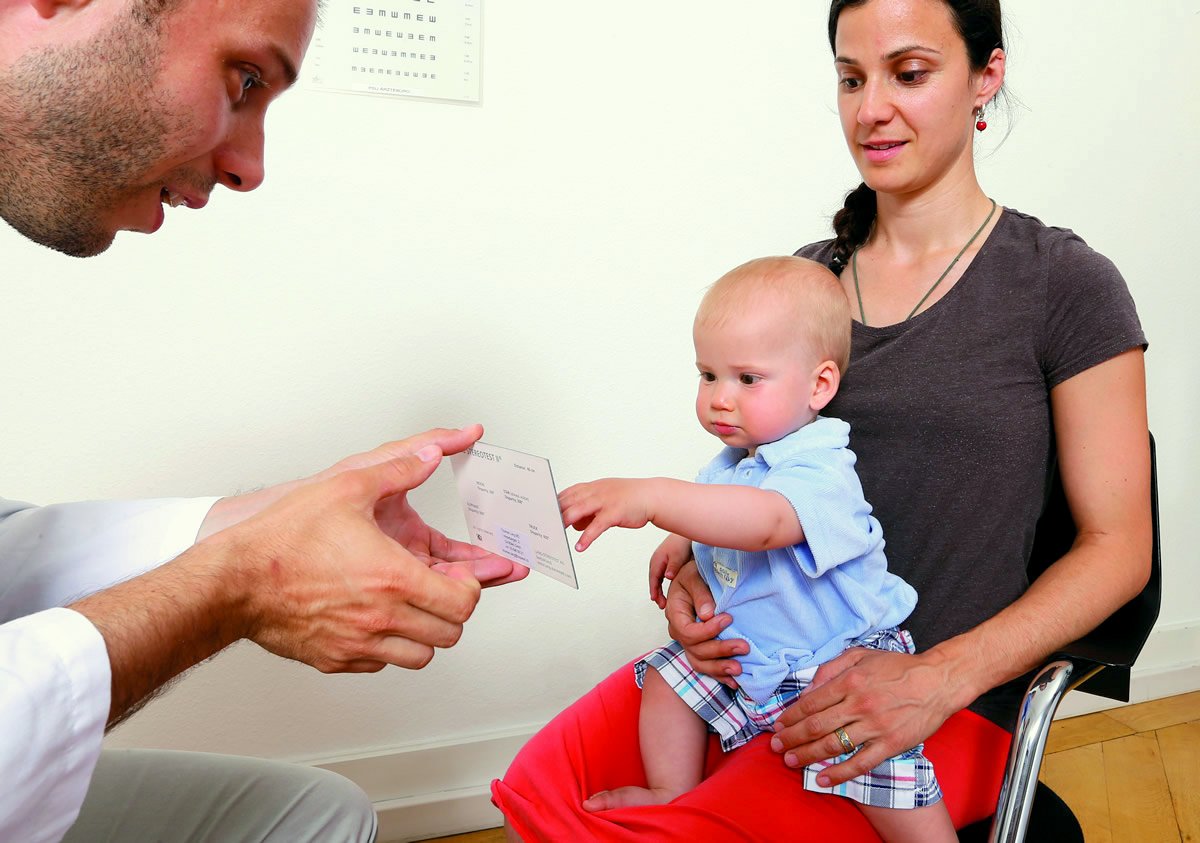In which countries is the Lang-Stereotest® used?
In many countries around the world, Lang-Stereotests® have been regularly used either alone or in combination with other tests for decades, especially in Europe, the USA, Canada, South America, India, China, Asia and as well as in Australia.
The systematic use of spectacle-free Lang Stereotest® has significantly lowered the age threshold for stereopsis screening in screening programmes in many countries.
But in which countries and at what age are stereo vision screenings with the Lang-Stereotest® routinely performed in all children due to regulatory guidelines or orders?
The University of Sheffield's comprehensive EUSCREEN study under the EU's Horizon 2020 research programme provides a detailed answer to this question.

The table below from this study provides an overview of eye screening in various countries around the world, and in particular the use of the Lang-Stereotest®. For each country, the link is to the respective country report as a PDF with much more information and with data on population, birth rate, commissioning of eye tests and guidelines.
In some countries, unfortunately, stereopsis screening is still not performed on children. The list does not claim to be exhaustive.
Increasing prevalence of stereopsis screenings
Over the past few decades, the increasing number of ophthalmologists who specialise in children's vision problems, as well as orthoptists who are often responsible for ensuring that they are performed correctly, has contributed significantly to the spread of stereopsis screening in children.
Their international umbrella organisations are the WSPOS (World Society of Pediatric Ophthalmogists) and the IOA (International Association of Orthoptics).
The problem with the introduction of photoscreening
In some countries, apparative screening with so-called photoscreening has become established in recent years. Although refractive media such as lens opacities, reduced visual acuity and retinas can be reliably examined from infancy onwards, small-angle strabismus up to 5 degrees (microstrabismus), which can also lead to unilateral amblyopia, is not detected by these screenings.
For this reason, most experts consider photo-screening alone to be insufficient and recommend that young children undergo a separate stereotest early on and several times during their development.
List of countries with stereopsis screening
For the countries in this list, the Lang-Stereotest® (unless otherwise mentioned) is used as standard for stereopsis screening, alone or in combination with other tests, in screening programmes throughout the country.
- Switzerland: at 1 ½ years, 2 and 3 years, by paediatrician, specialist nurse, ophthalmologist, orthoptist, optometrist/optician or general practitioner - download (PDF)
- Germany: before the third birthday (U7a), before the fourth birthday (U8) and after the 5th birthday (U9), by paediatricians and public health nurses - download (PDF) The prevalence of persistent amblyopia (not detected or treated at screening) at age 7 years is unknown. However, a study by Elflein et al. (2015) found a prevalence of 5.6% in adults aged 35-44 years.
- Austria: from the fourth to the end of the seventh year of life, by paediatrician, ophthalmologist, orthoptist, general practitioner, optician - download (PDF)
- Hungary: between 2 ½ and 3 years by health visitor - Download (PDF)
- Italy: from the fourth to the end of the seventh year, by paediatrician, hospital (ophthalmologist, orthoptist) - Download (PDF)
- Spain: from the fourth year annually, or a second time at the age of six, by health nurse, optometrist or paediatrician: no stereotest* - Download (PDF)
- France: from the age of four to the end of the seventh year, by paediatrician, nurse, ophthalmologist, orthoptist or general practitioner - download (PDF)
- Belgium: from the age of four to the end of the seventh year: at schools by paediatrician, specialist nurse, orthoptist or technical assistant in ophthalmology - download (PDF)
- Bosnia/Herzegovina: from the fourth to the end of the seventh year of life: by ophthalmologist, orthoptist, at paediatric health centre or hospital - download (PDF)
- Serbia: from 3 months of age until the end of the seventh year: by paediatrician and ophthalmologist (long stereotest I already before 3 years of age) - Download (PDF)
- Island: from the fourth to the end of the seventh year of life, by health nurses in schools - Download (PDF)
- Scotland: from the age of four to the end of the seventh year, by orthoptists in nursery, health centre, eye clinic (Frisby or TNO only) - Download (PDF)
- India: from the age of four to the end of the seventh year, at schools and hospitals, by paediatricians, ophthalmologists, orthoptists, teachers - Download (PDF)
- Kosovo: from the fourth to the end of the seventh year of life, at schools and hospitals, by general practitioners, paediatricians, ophthalmologists at schools, surgeries, hospitals (Titmus test only) - Download (PDF) There is no data available in Kosovo concerning the prevalence of treated, untreated or persistent amblyopia by the age of 7 years.
- Latvia: from the fourth to the end of the seventh year of life by general practitioners, ophthalmology practice (many different stereotests incl. Lang-Stereotest®) - download (PDF)
- Luxembourg: from 3 months to 7 years of age, exclusively by orthoptists, (Lang stereotest® I already before 3 years of age) - Download (PDF)
- China: from 3 months of age until 7 years of age by paediatricians and opthalmologists in eye practices (Titmus stereotest only). - Download (PDF)
- Slovenia: from the fourth to the end of the seventh year of life, by specialised nurse (stereopsis not everywhere, if then with Lang-Stereotest® and Titmus) - download (PDF)
List of countries without stereopsis screening
In the countries included in this listing with the note "*no stereopsis screening", stereopsis is not routinely screened, i.e. neither the Lang stereopsis test nor other star tests are used in vision screening. Only the Brückner test or Hirschberg test are mentioned, which test the position of the eye axes alone, but not stereopsis.
- England and Wales: from the fourth to the end of the seventh year of life: by orthoptist, specialist nurse or health care assistant: no stereo vision test* - download (PDF) In a population-based cohort study of children, data were available for 7825 seven-year-old children. Of these, 2.3% (95% CI 2.0% to 2.7%) had manifest strabismus, 3.6% (95% CI 3.3% to 4.1%) had past/present amblyopia and 4.8% (95% CI 4.4% to 5.3%) were hypermetropic (Williams et al., 2008)
- Netherlands: from the fourth to the end of the seventh year of life: by paediatric nurses and paediatricians: no stereotest* - Download (PDF) *de Koning et al. (2013) investigated the effectiveness of screening for amblyopia and other eye disorders in a prospective 7-year birth cohort study (n=4,624) using the same data set as the study by Groenewoud (2010) mentioned earlier. They report: The sensitivity of the Dutch vision screening programme was 73% at age 7 years. The specificity of the Dutch vision screening programme was 83% at age 7 years. The prevalence of treated or untreated amblyopia between birth and 6 years of age was 3.4% in a 7-year birth cohort study of 4,624 children (Groenewoud 2010).
- Denmark: from the fourth to the end of the seventh year of life: by general practitioner and public health nurse: no stereotest.* - Download (PDF) *The prevalence of strabismus is reported to be 2.56% at 7 years of age, according to a dissertation by Torp-Pedersen (2017) based on Danish National Health Records. The percentage of children treated for strabismus and amblyopia after being screened before the age of 7 is 8-10% (Torp-Pedersen, 2017). Specific data on strabismus and amblyopia are not publicly available without seeking permission. There is no centrally registered documentation of who has received screening, as most screening is done in private eye care practices. These professionals do not submit data to databases, so it is not possible to screen these children.
- Sweden: Ophthalmologists, paediatricians, general practitioners (GP) or specialised nurses at schools, hospitals, health centres: no stereotesting.* - Download (PDF)
- Norway: from age 4 to 7, general practitioners, health nurse: no stereotest* - Download (PDF)
- Finland: from age 4 to 7, GPs, public health nurses: no stereotest* - download (PDF)
- Czech Republic: from age 4 to 7, paediatricians, public health nurses: no stereotest* - Download (PDF)
- Slovakia: from age 4 to age 7: paediatricians: no stereotest* - Download (PDF) The prevalence of treated or untreated and persistent amblyopia at age 7 is estimated at 20%.
- Poland: from age 4 to 7 years, by general practitioners(GP), ophthalmologists, paediatricians and nurses: no stereotest*. - Download (PDF) The prevalence of treated or untreated amblyopia in Poland at age 7 years is estimated to be 3%, and the prevalence of persistent amblyopia (missed or untreated at screening) is estimated to be 1% at age 7 years. The prevalence of strabismus at age 7 years is estimated at 5%.
- Bulgaria: between birth and 3 years of age, by neonatologist, then by general practitioner, but only visual acuity. No stereo test*. - Download (PDF) A cross-sectional study (Dikova, Dragoev and Chernodrinska, 2018) of 1675 children in western Bulgaria aged 4-10 years found that the prevalence of treated or untreated amblyopia in Bulgaria at age 7 years is estimated at 2.5%. However, as there is no standardised screening in Bulgaria, it is not possible to determine the prevalence of persistent amblyopia. No data are available on the prevalence of strabismus in Bulgaria.
- Greece: from the age of four to 7 years, by paediatricians, ophthalmologists, general practitioners. No stereotest*. - Download (PDF) Prevalence/diagnosis of strabismus and amblyopia: No data available
- .
- Romania: from the age of four to 7 years, by ophthalmologists in kindergarten. No stereotest*. - Download (PDF) No data are available on the prevalence of strabismus or amblyopia in children aged up to 7 years.
- Israel: from age 4 to 7 years, by optometrists, public health nurses, trained lay people, No stereotest*. - Download (PDF) No data are available on the prevalence of treated or untreated amblyopia at age 7 years.
- Estonia: from age 4 to 7 years, by outpatient clinic, No stereotest*. - Download (PDF)
- Croatia: from the age of four to 7, by ophthalmologist at child health centre. No stereotest*. - Download (PDF) The prevalence of treated or untreated amblyopia in Croatia is estimated at 8.08% at 48-54 months of age, based on the assessment of 15,648 children.
- Ireland: from age four to age 7, by public health nurse, public health officer. No stereotest*. - Download (PDF) No data on prevalence of amblyopia or strabismus
- Turkey: from age four to age 7, by paediatrician, ophthalmologist, public health nurse. No stereotest*. - Download (PDF) In Turkey, the prevalence of treated or untreated amblyopia is estimated to be 3-4%, with a prevalence of persistent amblyopia (missed at screening or not treated by age 7 years) of 0.02%. Further data are not available.
- Northern Macedonia: from age four to age seven, by ophthalmologist, at university clinic. No stereotest* - download (PDF) No data are available on the prevalence of treated or untreated amblyopia, persistent amblyopia or strabismus.
- Montenegro: from four to seven years of age, by paediatrician in practice. No stereotest*. - Download (PDF) There is no information on the prevalence and diagnosis of visual impairment in children up to 7 years of age.
- Albania: from age four to seven years, by paediatrician or ophthalmologist in outpatient clinic. No stereotest*. - Download (PDF) No information is available on the prevalence and diagnosis of visual disorders in children up to 7 years of age.



















